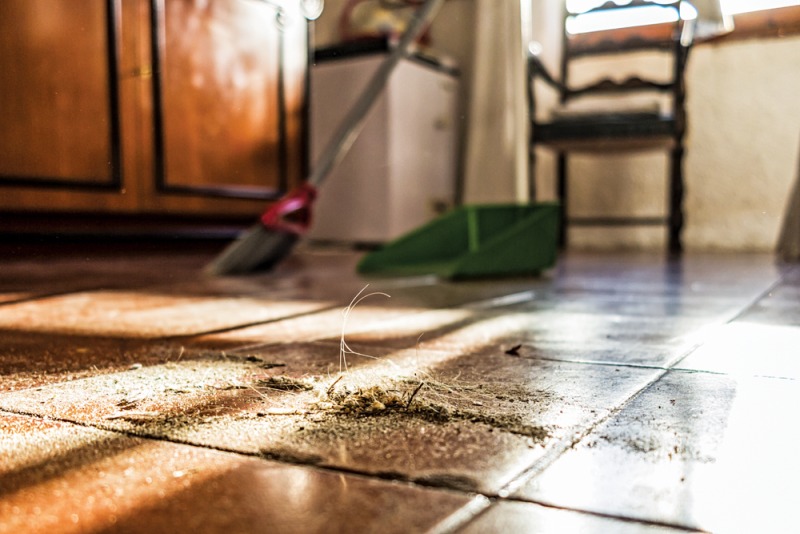Practical Ways to Keep Your Home Dust-Free for Longer
No matter how often you clean, dust always seems to find its way back — collecting on furniture, electronics, and windowsills. While total elimination is impossible, you can slow down dust buildup dramatically by addressing its root causes and adjusting how you clean.
Let’s explore how to keep your home looking fresh and dust-free without daily scrubbing.
Why Does Dust Keep Coming Back?
Dust is made of more than just dirt — it’s a mix of fabric fibers, pet dander, human skin cells, pollen, and microscopic outdoor particles that settle indoors.
Even small habits like opening windows or walking in shoes contribute to this invisible cycle.
Common Sources of Dust:
- Air circulation systems that spread particles through vents
- Carpets and curtains that trap dust deep within fibers
- Pets that shed fur and dander daily
- Outdoor pollutants entering through open windows and gaps
- Cluttered décor that collects dust faster than flat surfaces
Step-by-Step Plan to Minimize Dust Accumulation
Reducing dust isn’t about constant cleaning — it’s about prevention and smarter techniques.
Step 1: Upgrade Your Air Quality
- Install a True HEPA air purifier to trap airborne dust before it lands.
- Replace HVAC filters every 60–90 days with MERV 11–13 filters for maximum filtration.
- Schedule duct cleaning at least once a year to remove trapped debris.
Step 2: Manage Dust at Entry Points
- Seal gaps around windows and doors using weatherstripping or caulk.
- Keep a doormat and shoe rack near entrances — and adopt a no-shoes policy.
- Clean window sills and door frames weekly; they’re common dust hotspots.
Step 3: Reconsider Home Fabrics
- Choose machine-washable curtains and low-pile rugs.
- Vacuum carpets twice a week using a HEPA vacuum.
- Wash bedding, throws, and cushion covers frequently — these trap lint and fibers.
Step 4: Control Pet-Related Dust
- Brush pets outdoors to reduce shedding.
- Wipe paws and fur before they re-enter the house.
- Use washable pet bedding to keep dander under control.
Step 5: Maintain Proper Humidity
- Keep indoor humidity between 40–50%.
- Use a humidifier if your air is too dry — dry air lets dust float more easily.
- Conversely, if you live in a damp area, a dehumidifier helps prevent mold and musty buildup.
Smart Cleaning Habits That Actually Work
Use Microfiber Instead of Feather Dusters
Microfiber traps dust rather than spreading it around the room. Lightly dampen it for better results.
Vacuum Efficiently
Clean in one direction to pick up large particles, then again in the opposite direction for fine dust.
Clean Electronics with Anti-Static Sprays
Static charges attract dust to screens, cables, and consoles — an anti-static cleaner helps prevent this.
Declutter Regularly
The fewer surfaces you have, the less space dust can settle on. Keep decorative items minimal and easy to clean.
Bonus Tips to Keep Your Home Cleaner Longer
- Wash pillowcases and bedsheets every week — they’re dust magnets.
- Use sealed storage bins instead of open baskets.
- Schedule a “light dust day” every few days to stay ahead of buildup.
- Keep ceiling fans and air vents dust-free — these spread particles every time you turn them on.
Frequently Asked Questions
Q1: Why does dust form even after vacuuming?
Because vacuuming only removes what’s settled. Airborne dust keeps circulating until filtered or trapped.
Q2: Can indoor plants help reduce dust?
Yes! Certain plants, like peace lilies and rubber plants, help trap airborne particles naturally.
Q3: What’s the easiest habit to start today?
Replace your HVAC filter and wipe surfaces with a microfiber cloth every three days — it’s simple and effective.
Final Thoughts
You can’t stop dust from existing — but you can stop it from taking over.
By improving air filtration, controlling entry points, and cleaning smarter, your home can stay visibly cleaner for much longer — giving you fresher air and fewer allergy triggers.


